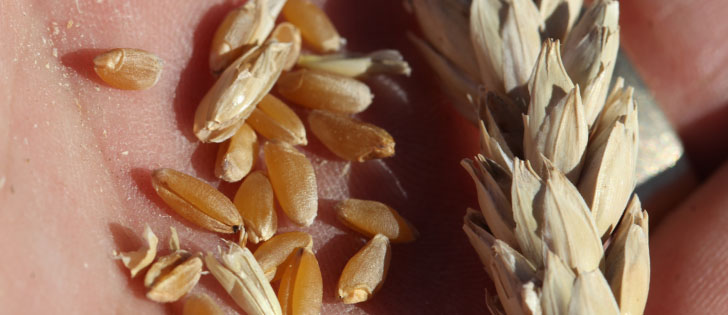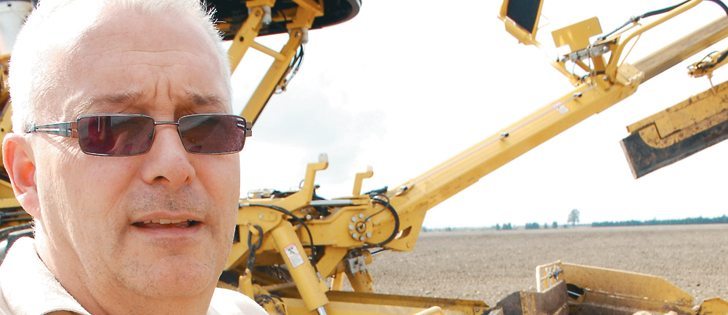Alberta producers who practise zero tillage have been paid millions of dollars over the past few years as part of an emissions trading scheme in the province.
The Alberta Offset System has compensated them for conservation tillage because the management practice is supposed to hold more carbon in the soil, reducing the amount of greenhouse gas in the atmosphere.
However, recent research from the University of Manitoba and work done at Ohio State University over the past decade suggest zero tillage is no better than conventional tillage when it comes to storing greenhouse gases.
Read Also

Environmental farm group has Ottawa’s attention
In 2021, Farmers for Climate Solutions published a report on how Canada should reduce emissions from agriculture. Not long after, the federal government implemented most of the recommendations in the report.
Those results don’t surprise John Baker, a University of Minnesota professor who studies greenhouse gas balancing within agricultural systems. He has questioned the notion that no till sequesters more carbon than conventionally tilled soils.
“There are a lot of benefits to no till, in terms of reduced fuel use and erosion protection … so expansion of no till is a good thing,” said Baker, who is also a research leader with the U.S. Department of Agriculture, specializing in soil physics and micrometeorology.
“But I think we’re deluding ourselves a little bit if we think it’s making a big difference on climate change and carbon balance.”
There are experts who would strongly disagree with Baker’s conclusion, but Aaron Glenn, a micro-meteorologist with Agriculture Canada in Brandon, isn’t one of them.
“The carbon credit stuff is still going forward in Alberta … but there isn’t a lot of (scientific) evidence to support it,” he said.
As part of his doctoral thesis in soil science at the University of Manitoba, Glenn monitored the emission and absorption of greenhouse gases from no till and conventionally tilled plots at the university’s Glenlea Research Station south of Winnipeg.
Glenn and his colleagues grew a rotation of corn, fababeans and spring wheat from 2006-08 on four plots: two were tilled in spring and fall and the others farmed with no till.
The reduced tillage plots received a light harrowing at the beginning of the experiment to prepare the seed bed for planting.
The scientists attached instruments to one-metre-high towers to measure the influence of no till on carbon dioxide and nitrous oxide exchange between the soil and the atmosphere.
“From an atmospheric exchange perspective, this study was one of the first of its kind in Canada,” Glenn said.
His three year study showed reduced tillage plots failed to sequester more greenhouse gas than conventionally tilled plots.
“We didn’t actually find a treatment difference.”
The results were unexpected because other studies have shown that no-till soil stores more carbon than conventionally tilled land.
Reduced tillage is supposed to alter the composition of the soil, which leads to increased storage of greenhouse gases.
“By not tilling the soil, you’re not breaking up larger soil aggregates,” Baker said.
“Carbon that is held inside the aggregates is not as exposed to oxygen.”
The promotion of conservation tillage as part of the solution to climate change has been based on this link between no till and increased carbon storage.
However, in 2006 Baker questioned the quality of some scientific experiments on zero tillage and carbon sequestration.
His research review found fault in the methodologies of several studies that concluded reduced tillage stored more carbon in the soil. Most of them collected soil samples at depths of 30 centimetres or less, which Baker said skewed the results in favour of zero tillage.
“In essentially all cases where conservation tillage was found to sequester (more carbon), soils were sampled to a depth of 30 cm or less.”
He said the few studies that took soil samples deeper than 30 cm found that zero till soil sequestered the same, or less, carbon than conventionally tilled plots.
Baker has concluded that zero tillage stratifies carbon in the soil rather than storing more of it.
He said this might be because reduced tillage soil has more roots near the surface, while conventionally tilled fields have more roots at greater soil depth.
Partially in response to Baker’s criticism of soil sampling protocols, Umberto Blanco-Canqui, a graduate student at Ohio State, examined carbon storage at 11 sites in Kentucky, Ohio and Pennsylvania where no till had been practiced for years.
Most of the previous experiments on carbon sequestration had been done at the plot scale, and soil samples were taken at depths of 30 cm or less. Blanco-Canqui designed his study for the field scale and sampled the soil to depths of 60 cm.
A zero till field was paired with a cultivated field at all 11 locations in the trial, and Blanco-Canqui eventually concluded that Baker was correct.
“NT (no till) farming increases SOC (soil organic carbon) concentrations in the upper layers of some soils, but it does not store more (carbon) than PT (plow till) soils for the whole soil profile,” Blanco-Canqui wrote in his paper, published in theSoil Science Society of America Journal.
In the paper, Blanco-Canqui said he was surprised that no till soil in the trial didn’t contain more soil organic matter than cultivated soils. Plowed soil actually had more soil organic matter than no till soil at a few sites.
“First, (plow till) management mixes and buries residue at deeper depths than (no till) farming,” Blanco-Canqui wrote in an attempt to explain why plowed soils contained more carbon.
“Buried residues at the deepest boundaries of the plowed layer decompose at slower rates than surface residues because they are protected from microbial attack and erosion hazards, which favors (soil organic carbon) accumulation.”
Rattan Lal, who heads up the Carbon Management and Sequestration Centre at Ohio State and was Blanco-Canqui’s study supervisor and paper co-author, is known as a supporter of zero tillage and carbon sequestration, but he readily acknowledged that Blanco-Canqui and Baker are correct.
“Plow till, in many cases, has more carbon below the plow layer than no till has,” he said.
“Therefore, if you sum it up, the entire pool (of carbon), it’s not different in both cases.”
However, Lal said carbon trading schemes that compensate no-till farmers are still scientifically valid, partly because they burn significantly less diesel per acre than other farmers.
“But there is one other component that is very important, and that component is soil erosion,” he said.
“Soil erosion causes long-term changes in soil dynamics…. So when you add up the soil erosion part and you add up the diesel consumption … when you add up the water conservation … the ecosystem biodiversity … no till farmers should be paid more because they are avoiding emissions and sequestering (carbon).”
Baker said scientists need to study the interaction between the soil and atmosphere more before reaching a final conclusion on the link between no till and carbon sequestration.
Baker remains skeptical about the final outcome.
“I’m not optimistic that this is ever going to be a major contributor to mitigation of climate change. It might be one piece of a much bigger puzzle.”
Carbon facts
• Offset credits registered for zero tillage in Alberta, per tonnes of carbon dioxide, between 2007 and 2010: 5.08 million tonnes (CO2 equivalent)
• Total value of those offsets, assuming price per tonne of $9: $45.72 million
• Total number of acres registered for offset credits in 2010: 3.36 million (estimate)
• Zero till acreage in Alberta: seven million
• Zero till acres in Alberta, Manitoba and Saskatchewan: 25.0 million
Sources: Alberta Agriculture, Soil Conservation Council of Canada, staff research















